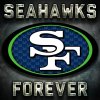While interesting, this thread has started to meander a bit. I'll try to give a concise, but general rundown.
First, I'll start with what I call real Les Pauls - essentially, ones with neck binding. These are what most people would think of when you say "Les Paul". These guitars have an arched top, binding on the fingerboard and at least the top of the body. These are generalized into three tiers: Standard, Deluxe, and Custom. Standards are typically bursts and have binding only on the fingerboard and top of the body. Deluxes are like standards, except they have mini humbuckers. Deluxes are often goldtops. Custom adds gold hardware, binding to the back of the body and headstock, fancy headstock inlays, and block fingerboard inserts. Back when ebony was available, customs almost always had ebony fingerboards. Customs were often black, in which case they had solid mahogany bodies instead of the normal maple top on mahogany. Customs also sometimes came with 3 pickups.
Re-issues (R8, R9, R0), traditionals, VOS, etc are modern takes on older versions of the above mentioned versions.
Next level down is the Les Pauls with carved tops, but without binding. These are the Studios, Faded, BFG, etc. There are a LOT of variations in this group.
Next down is the non-carved top versions: Specials, TV, Juniors, etc. These were intended to be starter guitars. Some had two pickups, some had one.
Next down is the Epiphone versions. There are all sorts of versions of Epiphone Les Pauls. In general, there are the higher quality set neck versions, and lower quality bolt-on neck versions (these used to be marketed under the "Baldwin" brand).
Notes:
I *think* anything marketed under the "Gibson" brand is made in the US, and has a nitrocellulose lacquer finish. Epiphones are imported and have polyurethane finish.
In 1961, Gibson Les Pauls were what we'd now call the SG body style.
First, I'll start with what I call real Les Pauls - essentially, ones with neck binding. These are what most people would think of when you say "Les Paul". These guitars have an arched top, binding on the fingerboard and at least the top of the body. These are generalized into three tiers: Standard, Deluxe, and Custom. Standards are typically bursts and have binding only on the fingerboard and top of the body. Deluxes are like standards, except they have mini humbuckers. Deluxes are often goldtops. Custom adds gold hardware, binding to the back of the body and headstock, fancy headstock inlays, and block fingerboard inserts. Back when ebony was available, customs almost always had ebony fingerboards. Customs were often black, in which case they had solid mahogany bodies instead of the normal maple top on mahogany. Customs also sometimes came with 3 pickups.
Re-issues (R8, R9, R0), traditionals, VOS, etc are modern takes on older versions of the above mentioned versions.
Next level down is the Les Pauls with carved tops, but without binding. These are the Studios, Faded, BFG, etc. There are a LOT of variations in this group.
Next down is the non-carved top versions: Specials, TV, Juniors, etc. These were intended to be starter guitars. Some had two pickups, some had one.
Next down is the Epiphone versions. There are all sorts of versions of Epiphone Les Pauls. In general, there are the higher quality set neck versions, and lower quality bolt-on neck versions (these used to be marketed under the "Baldwin" brand).
Notes:
I *think* anything marketed under the "Gibson" brand is made in the US, and has a nitrocellulose lacquer finish. Epiphones are imported and have polyurethane finish.
In 1961, Gibson Les Pauls were what we'd now call the SG body style.


 I suppose that is good enough, and the Seattle T-birds rarely get press so no harm.
I suppose that is good enough, and the Seattle T-birds rarely get press so no harm.
 cop0
cop0